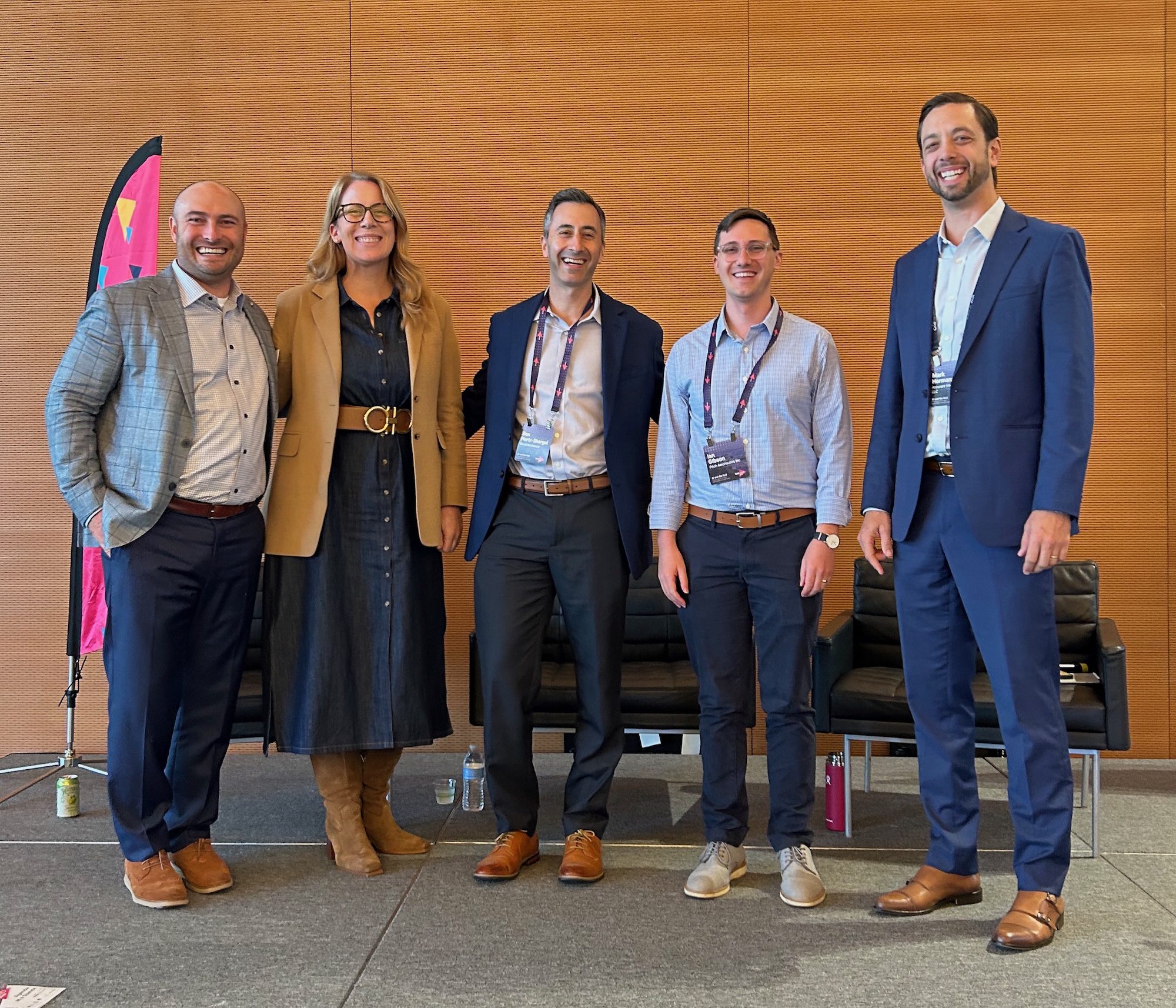The growth of AI and the modern grid are inextricably linked. The grid needs to deliver power to a growing fleet of huge data centers, while AI offers promise to make the grid more efficient and resilient.
To ramp up the topic, we invited Sean Kelly, co-founder & CEO at Amperon, and Xing Wang, global leader of grid modernization at AWS Energy and Utilities, to kick off season 6 of our podcast, now called Grid Forward Forum. Bryce Yonker, executive director and CEO of Grid Forward, guided the 30-minute discussion.
Below is an excerpt from the episode, lightly edited for readability. Listen to the entire episode here.

Bryce Yonker: How much is load growth going? It’s difficult for local jurisdictions to pinpoint an accurate estimate.
Sean Kelly: The big issue here is there’s a lot of double (and more) accounting. One private equity firm will say this is my project and somebody else will respectfully disagree, and they’ll both put in for the same project. The large hyperscalers may say they want to put something in South Zone of Texas or in West Zone, or they may decide between Virginia or Montana. And they’re not going to build duplicates. The double counting in the queue is going to be very hard.
Utilities are in trouble from the standpoint of they thought that demand growth was going to be flat. We’ve retired a whole lot of thermal generation, and now growth on the load side is rapidly increasing. So it’s going to be a lot [but] it’s going to be significantly less than the high numbers that are coming out right now.
Bryce Yonker: [Xing] give some numbers on how much you guys are growing. What’s the scale?
Xing Wang: The scale is absolutely very significant. I can’t see how much overall, but just the fact that our data center engineering team are looking at designing gigawatt level data centers to power the AI growth. The load is going to be, from data center side, very, very significant for a local utility, for a grid operator to even manage and plan. And certainly load integration is actually easier than the generation integration because that represents economic growth. The states and local governments really like that, they want to make it easier, but that does require to bring the power to that significant load. That means the grid has to be really enhanced and we need more capacity.
Bryce Yonker: I was having lunch yesterday with a major data center developer, and I asked them about how many projects they had in motion. They said 50. I said 5-0? Yes. And their preference is to not build any of them less than a gigawatt now. Now they won’t be able to do all of them at that scale, but that’s what we’re talking about there.
Let’s talk about dynamics in the market. The new administration [has] prioritized expansion of generation, increased domestic supply chain and has positioned AI at the core of that from a competitive advantage standpoint. How do these elements come together, and what do they mean on the grid?
Xing Wang: We need more to build more transmission. I think everyone agrees with that. We need a stronger grid, but that takes time, right? And in the near term, I think we want to use technology, including AI, to make grid more flexible. We can predict better, right? We can plan better. And we can interconnect those new generation capacity better, no matter whether they are renewables, batteries or maybe natural gas even, or nuclear. So those things I think we can do.
Sean Kelly: Yeah, I definitely agree on having more transmission built, but it’s hard. No one wants it in their backyard. It’s really expensive. It takes a long time. The permitting process is pretty wild.
One of the things I appreciate is the repowering of nuclear assets, so I really want those to get passed. We saw that with Three Mile Island, with Palisades. There’s more out there that can be done. I really believe that nuclear, the answer that we’ve had since right after World War Two, has been sitting here the whole time for net zero. But it’s also reliable. And so that’s what I really want to see.
The other thing is flexible load resources. We need people to behave when we need them to behave, and that’s where you can, are you moving your computer around, or are you actually running your processes at times that are helpful? I really think we’re going to see on the compute side, a demand response or a virtual power plant type of flexibility. So those are the things we can solve for in the shorter term.
Listen to the entire episode to hear more about large language models, data center flexibility, facilitating interconnection queues, predictive analytics, grid visibility, automating the control room and other areas where AI may make a significant impact in advancing the grid.
Grid Forward Forum is available on the web or in the most popular podcast apps. Subcribe to the podcast to hear all of the coming episodes.
Grid Forward will focused on AI and the Grid for its GridFWD 2025 event in October.



